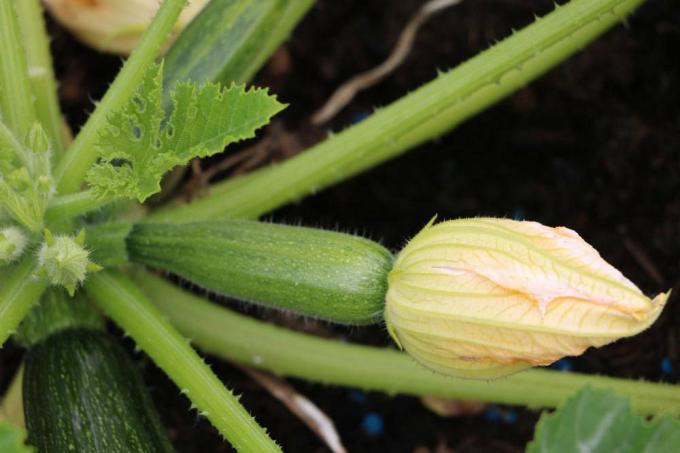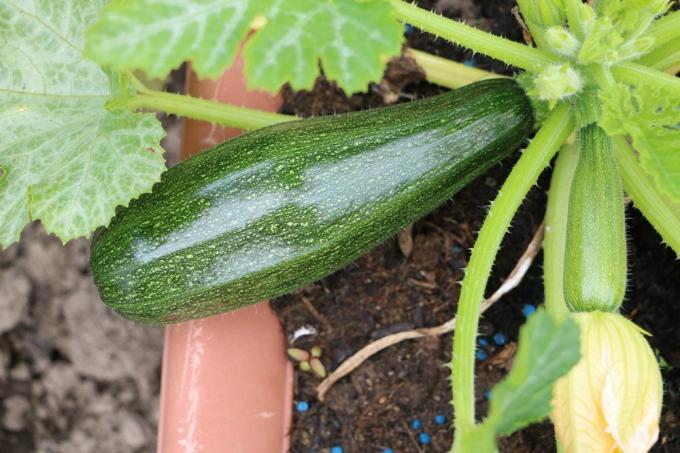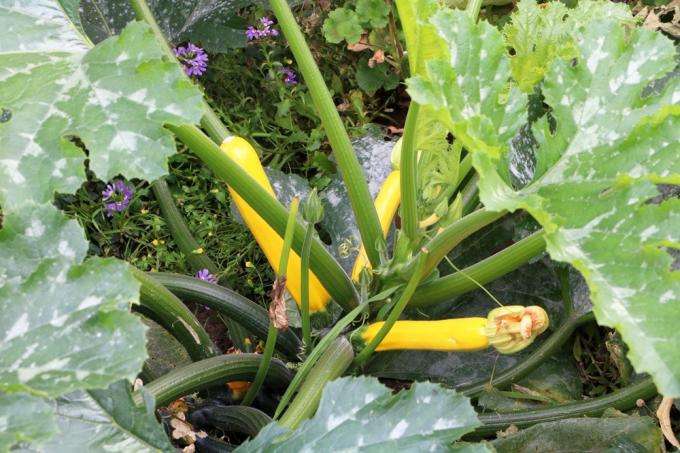
table of contents
- causes
- Care errors
- Pests
- Diseases
- prevention
If the zucchini plant gets yellow or brown leaves, there can be numerous causes. Pests, diseases, and mistakes in care come into question. In order to be able to take the appropriate countermeasures, the cause of the discolored zucchini leaves must first be known. With the appropriate knowledge, the triggers can be identified and treated quite easily.
causes
Care errors
Mistakes in care are quite often responsible for yellow and brown leaves. The following triggers are possible, among others:
Too little or too much water
The zucchini can have leaves discolored from both dryness and waterlogging. When it is dry, the zucchini leaves can no longer be adequately supplied; when wet, they die off due to root rot.
Wrong fertilization or lack of nutrients
Both excess and lack of nutrients can discolour zucchini leaves. Due to their rapid and vigorous growth, the plants have a high demand, which increases both the risk of a deficiency and of an oversupply by a well-intentioned one Fertilization.
Burns and lack of light
Placing zucchini in direct sunlight can cause burns. Shoot and leaf tips or even larger sections can turn yellow and brown when they are burned. However, there may also be discoloration of the leaf green if the location chosen for the plants is too dark.
If discoloration is observed, site conditions and care should be checked. Often a significant improvement can be achieved by making small changes in these areas. In addition, zucchini plants are much more resilient under optimal conditions and are therefore less susceptible to diseases and pests.
Pests
Both lice and snails like to feed on the zucchini and can cause considerable damage in the process. In addition to the discoloration, feeding marks are also typical in snails. In the case of lice, spots and deformations are more likely to appear on the large leaves. If lice or snails are noticed, the following measures can help:
Favor or bring in natural predators
Ladybugs, which are also available in specialist shops, help against lice. Birds, shrews and martens are ideal against snails. If the garden is made accordingly inviting, a balance can be quickly established.
Collecting
Collecting lice is not recommended. However, snails can very well be removed from the plants manually.
Repellants
Garlic and nettle as well as pesticides for vegetables can have a defensive effect and are easy to use.
Diseases
Whether powdery mildew or zucchini yellow mosaic virus, treatment can be done through the following steps:
remove and destroy infected plant sections
- Leafy greens, shoots and fruits should not end up on the compost
use appropriate means
- Fungicides and pesticides can treat the diseases at an early stage.
Carry out precise controls
- Pests are not always easy to identify and treat
- The earlier it is found, the easier it is to treat
- Visual inspections of all parts of the plant help to prevent severe infestation and not just prevent yellow leaves
prevention
As mentioned, coordinated culture conditions are the best prevention. But also:
Controls
The sooner it is recognized, the better it is banned. Checks carried out at least once a week enable rapid intervention.
Selection of resistant varieties
Some varieties are more resistant than others. If you choose carefully, you have to take fewer precautionary measures.
Good care
If you take the needs of the crop into account from the outset, you can specifically prevent yellow and brown leaves.



